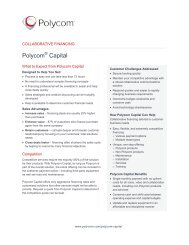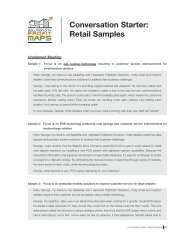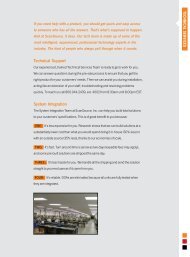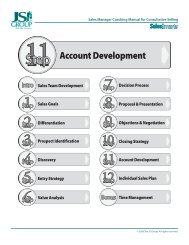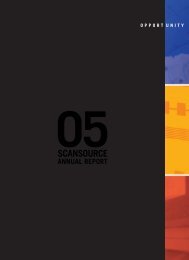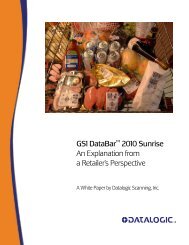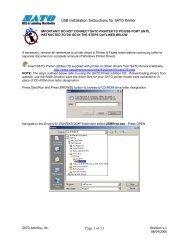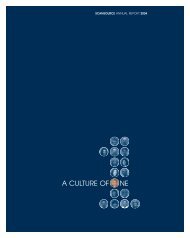Download PDF - ScanSource
Download PDF - ScanSource
Download PDF - ScanSource
Create successful ePaper yourself
Turn your PDF publications into a flip-book with our unique Google optimized e-Paper software.
SCANSOURCE, INC. AND SUBSIDIARIES<br />
Notes to Consolidated Financial Statements<br />
June 30, 2007<br />
The following significant accounting policies relate to the more significant judgments and estimates used in the preparation of the consolidated financial statements:<br />
(a) Allowances for Trade and Notes Receivable<br />
The Company maintains an allowance for uncollectible accounts receivable for estimated losses resulting from customers’ failure to make payments on accounts<br />
receivable due to the Company. Management determines the estimate of the allowance for uncollectible accounts receivable by considering a number of factors,<br />
including: (1) historical experience, (2) aging of the accounts receivable and (3) specific information obtained by the Company on the financial condition and the current<br />
creditworthiness of its customers. If the financial condition of the Company’s customers were to deteriorate and reduce the ability of the Company’s customers to make<br />
payments on their accounts, the Company may be required to increase its allowance by recording additional bad debt expense. Likewise, should the financial condition of<br />
the Company’s customers improve and result in payments or settlements of previously reserved amounts, the Company may be required to record a reduction in bad debt<br />
expense to reverse the recorded allowance. A provision for estimated losses on returns and allowances is recorded at the time of sale based on historical experience.<br />
(b) Inventory Reserves<br />
Management determines the inventory reserves required to reduce inventories to the lower of cost or market based principally on the effects of technological<br />
changes, quantities of goods on hand, and other factors. An estimate is made of the market value, less cost to dispose, of products whose value is determined to be<br />
impaired. If these products are ultimately sold at less than estimated amounts, additional reserves may be required. Likewise, if these products are sold for more than the<br />
estimated amounts, reserves may be reduced.<br />
Reclassifications<br />
Certain prior year amounts have been reclassified to conform to the current year presentation in the accompanying consolidated financial statements.<br />
Stock Split<br />
Effective June 5, 2006, the Board of Directors of the Company approved a two-for-one stock split of the common stock effected in the form of a 100% common stock<br />
dividend. All shares and per share amounts have been retroactively adjusted to reflect the stock split.<br />
Cash and Cash Equivalents<br />
The Company considers all highly liquid investments with original maturities of three months or less to be cash equivalents. Book overdrafts of $45.7 million and<br />
$43.4 million as of June 30, 2007 and 2006, respectively, are included in accounts payable.<br />
Concentration of Credit Risk<br />
The Company sells its products to a large base of value-added resellers throughout North America, Latin America (including Mexico) and Europe. The Company<br />
performs ongoing credit evaluations of its customers’ financial condition. In certain cases, the Company will accept tangible assets as collateral to increase the trade credit<br />
of its customers. No single customer accounted for more than 6% of the Company’s net sales for fiscal 2007, 2006, or 2005.<br />
38






